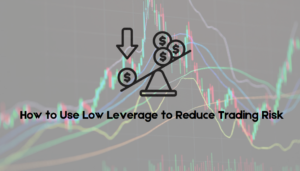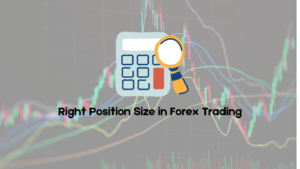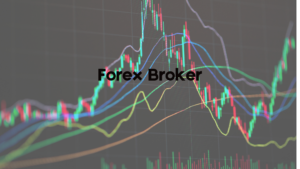In finance, equity refers to the ownership value of an asset or business after subtracting any liabilities or debts. For example, in the context of a company, equity represents the shareholders’ ownership interest, calculated as the total assets minus total liabilities. It can also refer to the portion of an asset that an individual or entity owns outright, without encumbrances. In real estate, equity is the difference between the market value of a property and the amount owed on any mortgages or loans secured against it. Essentially, equity reflects the true value of an asset to its owner.
It is a fundamental concept in financial statements and investments. It appears on a company’s balance sheet under shareholders’ equity, which includes common stock, preferred stock, retained earnings, and additional paid-in capital. Positive equity indicates that a company or individual has more assets than liabilities, while negative equity suggests a situation where liabilities exceed assets. For investors, equity represents the profit potential, as increasing asset values or business performance can lead to higher value.
Equity vs. Equality:
Equity and equality are terms that are often used interchangeably but have distinct meanings. Equality refers to treating everyone the same way, providing everyone with the same resources or opportunities regardless of their individual circumstances. This approach assumes that everyone starts from the same level, but it doesn’t account for differences in needs or starting points. Equality aims to give everyone an equal share of resources or opportunities, often leading to uniform outcomes.

On the other hand, equity focuses on fairness and justice by taking individual circumstances into account and providing varying levels of support based on specific needs.It seeks to address disparities and ensure that everyone has the opportunity to succeed by distributing resources or opportunities in a way that compensates for disadvantages or unequal starting points. This approach acknowledges that different individuals or groups might need different levels of support to achieve similar outcomes. It aims to level the playing field by addressing systemic inequalities and providing tailored assistance to those who need it.
Equity in Forex Trading:
In forex trading, it refers to the total value of a trader’s account, including both the current balance and the unrealized gains or losses from open positions. It represents the net worth of the trading account at any given moment. Unlike the account balance, which only includes realized profits or losses, equity provides a more comprehensive view by factoring in the value of positions that are still open. This is crucial because it reflects the actual financial health of the trading account, taking into account the impact of current market conditions on open trades.
It can fluctuate throughout the trading day as market prices change and open positions gain or lose value. If a trader has several open positions, the equity will adjust based on the performance of these positions. For example, if a trader’s open positions are currently in profit, the equity will be higher than the account balance. Conversely, if the open positions are in a loss, the equity will be lower. Understanding it is essential for managing risk and maintaining adequate margin levels to prevent margin calls or stop-outs.
Calculating Equity in a Forex Account:
Equity in a forex account is calculated using the formula:
Equity = Account Balance +Unrealized Profit/Loss
Here, the account balance is the amount of money that was deposited or remains in the account after accounting for realized profits and losses. Unrealized profit or loss refers to the gains or losses on open trades that have not yet been closed. For instance, if a trader has an account balance of $10,000, and their open positions have an unrealized profit of $500, the equity would be $10,500. If the open positions have an unrealized loss of $500, the equity would be $9,500.
Importance of Equity for Forex Traders:
It is crucial for forex traders because it determines the trader’s ability to sustain open positions and manage risk. A higher level indicates a stronger financial position, allowing traders to hold positions longer and absorb market fluctuations. Conversely, if it drops below a certain level due to adverse price movements, it can trigger margin calls or stop-outs, forcing traders to close positions or deposit additional funds to maintain their trades.
Moreover, It provides insight into the trader’s overall risk exposure and potential for future trading decisions. By monitoring it, traders can assess the impact of their open positions on their account balance and make informed decisions about adding to or reducing their trades. Maintaining a healthy level of equity is essential for effective risk management and ensuring that traders have the necessary cushion to weather market volatility.
Equity vs. Balance in Forex:
In forex trading, equity and balance are related but distinct concepts. The account balance is the total amount of money in a trader’s account, excluding any unrealized gains or losses from open positions. It represents the actual cash available, reflecting only the realized profits and losses from closed trades. On the other hand, it encompasses the account balance plus the unrealized profits and losses from open positions. Essentially, it provides a more dynamic picture of the account’s value by including the impact of active trades.
For instance, if a trader’s account balance is $5,000 and they have open positions with an unrealized profit of $300, their equity would be $5,300. Conversely, if the open positions are currently in a loss of $300, the equity would be $4,700. Therefore, while the balance remains static until trades are closed, equity continuously fluctuates with the market, reflecting the real-time value of the account including ongoing trades.
Role of Equity in Margin Trading:
It plays a crucial role in margin trading as it determines the trader’s margin levels and their ability to maintain open positions. In margin trading, traders borrow funds to trade larger positions than their account balance would normally allow. The margin requirement is a fraction of the total trade size and is deducted from the trader’s equity. A higher equity level means that the trader has more buffer to cover margin requirements and withstand market volatility.
If it falls below the required margin level due to adverse price movements, it can lead to a margin call or stop-out. A margin call occurs when the broker demands additional funds to cover potential losses, while a stop-out happens when the broker automatically closes positions to prevent further losses. Therefore, maintaining sufficient equity is essential for managing risk and ensuring that margin requirements are met, allowing traders to keep their positions open without being forced to liquidate prematurely.
Impact of Equity on Opening New Positions:
It directly impacts a trader’s ability to open new positions because it influences the amount of available margin. When a trader opens a new position, it requires a certain amount of margin, which is deducted from the current equity. If it is high, the trader can afford to take on more positions or larger trades, leveraging their capital more effectively. Conversely, if the equity is low, the trader’s ability to open new positions is limited by the available margin.
For example, if a trader’s equity is $10,000 and they wish to open a new trade that requires $1,000 in margin, their equity would be reduced to $9,000. If the equity drops too low, the broker might restrict the ability to open additional positions or require the trader to deposit more funds. Therefore, monitoring and managing it is crucial for ensuring that there is sufficient margin available to support new trades and avoid disruptions in trading activities.
When Equity Falls Below Margin Requirements
When it falls below the margin requirements, several critical events can occur, impacting the trader’s ability to maintain their positions. Margin requirements are set to ensure that traders have enough funds to cover potential losses on their open trades. If the equity in the account drops below this threshold, it signals that the account may not have sufficient funds to cover the current open positions, raising the risk of a margin call.
A margin call is a request from the broker for the trader to deposit additional funds into their account to bring it back up to the required level. If the trader fails to meet this margin call promptly, the broker may begin closing some of the trader’s positions to reduce the margin risk. This is done to prevent further losses and protect both the trader and the broker from excessive exposure. The forced liquidation of positions can lock in losses and reduce the overall trading capital.
In extreme cases, if it falls drastically, the broker might initiate a stop-out, where positions are automatically closed at the market price to prevent further negative balance. This automatic liquidation ensures that the account does not fall into a negative balance, but it can also result in significant losses for the trader, especially if the market moves rapidly.
Unrealized Profits and Losses and Their Effect on Equity:
Unrealized profits and losses have a direct impact on it by altering the total value of the trading account. Unrealized profits are the gains from open positions that have not yet been closed, while unrealized losses are the potential losses from positions that are currently open. These values fluctuate with market conditions and affect the equity balance of the account in real time.
For instance, if a trader has an open position showing an unrealized profit of $1,000, this amount is added to the account balance to calculate the current equity. Conversely, if the open positions show an unrealized loss of $1,000, this amount is subtracted from the account balance. This means that it reflects the current market value of all open trades, providing a more accurate picture of the account’s financial situation compared to the static account balance.

Managing unrealized profits and losses is crucial as they can significantly influence the trader’s ability to continue trading. If unrealized losses increase, they can erode equity, leading to potential margin calls or stop-outs. Conversely, unrealized profits can increase equity, offering more flexibility to open new positions or manage existing trades more effectively.
Equity and Stop-Out Levels:
Equity influences stop-out levels, which are predetermined thresholds set by brokers to automatically close positions when it falls below a critical point. Stop-out levels are designed to protect both the trader and the broker from excessive risk by ensuring that the account does not incur further losses beyond the margin limit. The stop-out level is typically set as a percentage of the margin requirement, and when equity drops to this level, the broker will begin closing positions to prevent negative balances.
For example, suppose the stop-out level is 50% of the margin requirement, and the trader’s equity falls below this level due to adverse market movements. In that case, the broker will start liquidating positions to bring the account back within acceptable limits. This automatic closure of positions helps to limit further losses and reduce the risk of the account falling into a negative balance.
Understanding and monitoring stop-out levels is essential for effective risk management. Traders should be aware of their broker’s stop-out policy and ensure their equity remains above this threshold to avoid forced liquidations. Proper management of equity helps to maintain trading flexibility and avoid abrupt disruptions in trading activities.
Tools and Strategies for Managing Equity in Forex Trading:
Several tools and strategies can help traders effectively manage it in forex trading. One essential tool is the use of a trading platform’s margin calculator, which helps traders assess the impact of their trades on their available margin and overall equity. By inputting trade sizes and leverage levels, traders can estimate the required margin and monitor how their equity would be affected by potential gains or losses.
Another key strategy is setting appropriate stop-loss orders for each trade. Stop-loss orders help to limit potential losses by automatically closing positions when the market moves against the trader’s position beyond a specified level. By implementing stop-loss orders, traders can protect their equity from significant drawdowns and maintain better control over their trading risk.
Lastly, maintaining a well-diversified trading portfolio can also help manage risk. Diversification involves spreading investments across different currency pairs or asset classes to reduce the impact of adverse movements in any single trade. This approach can help stabilize it by mitigating the effects of individual trade losses and improving overall risk management
Risks Associated with Equity Investment:
Equity investments come with several inherent risks that investors need to consider. One primary risk is market risk, which involves fluctuations in stock prices due to broader market conditions or economic factors. its values can be highly volatile, influenced by changes in interest rates, economic data, geopolitical events, and market sentiment. This volatility can lead to significant gains, but it can also result in substantial losses, making it crucial for investors to be prepared for potential swings in value.
Another risk is company-specific risk, which relates to the performance and stability of the individual companies in which one invests. Factors such as poor management decisions, financial difficulties, or declining business prospects can negatively impact a company’s stock price. Unlike diversified investment options, individual stocks can experience sharp declines due to issues specific to the company. This risk emphasizes the importance of conducting thorough research and analysis before investing in specific equities.
Common Misconceptions About Equity:
One common misconception about this investment is that it is a guaranteed way to make money over time. While equities have the potential for high returns, they also come with significant risks and are subject to market volatility. Some investors might assume that holding stocks long-term will always yield profits, but market downturns, poor company performance, or economic recessions can lead to losses. Understanding that equity investments can fluctuate and may not always result in positive returns is essential for managing expectations.

Another misconception is that investments are only suitable for wealthy individuals or those with a high-risk tolerance. In reality, come in various forms, including low-cost index funds and ETFs, which can be accessible to a broader range of investors. Additionally, with proper risk management and diversification, even investors with moderate risk tolerance can benefit from investments. Educating oneself about different investment options and risk levels can help dispel these misconceptions and enable more informed investment decisions.
Ethical Considerations of Equity Distribution:
Equity distribution, particularly within organizations and companies, involves several ethical considerations. One key issue is fairness and transparency in how equity shares are allocated. Ensuring the distribution is done equitably among employees, shareholders, and other stakeholders is crucial for maintaining trust and motivation. Companies must avoid practices that could lead to perceived favoritism or unfair advantage, which can undermine morale and lead to legal and reputational risks.
Another ethical consideration is the impact of equity distribution on social and economic inequalities. For instance, when a company or venture capital firm disproportionately allocates equity to a small group of high-level executives or investors, it can exacerbate income inequality and limit opportunities for broader participation. Ethical equity distribution should aim to balance interests and promote inclusivity, ensuring that all stakeholders have a fair opportunity to benefit from the company’s success. This approach not only supports a more equitable society but also fosters a more positive and productive organizational culture.
Whether in the context of financial markets or organizational distribution, is a multifaceted concept with significant implications. In financial terms, equity represents the ownership value of an asset or business, calculated as the difference between total assets and total liabilities. It is essential for understanding the true value of investments and managing risk, particularly in volatile markets like forex trading, where equity helps determine margin requirements and trading decisions.
Despite its potential for significant returns, it comes with notable risks, including market volatility and company-specific challenges. Misconceptions about it, such as assuming guaranteed returns or restricting investments to the wealthy, can lead to misguided expectations and investment choices. Understanding the inherent risks and the true nature of equity investments is crucial for effective financial planning and risk management.
Ethical considerations in its distribution also play a critical role, especially in ensuring fairness and addressing social and economic inequalities. Transparent and equitable distribution practices are vital for maintaining trust and fostering a positive environment, whether in corporate settings or broader economic systems. By considering these aspects, investors and organizations can make more informed, ethical decisions that align with both financial goals and broader social responsibilities.







